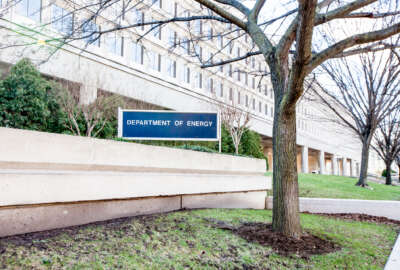IT spending forecast for 2012 and beyond
The federal government will increase its spending on information technology from $86 billion in 2010 to $112 billion by 2015, according to a new forecast by Input,...
By Suzanne Kubota
Senior Internet Editor
FederalNewsRadio.com
The federal government spends around $80 billion a year for information technology, the networks and computers that keep everything running.
But, especially after the elections, the administration will push even harder for cost-cutting measures.
Brian Haney, senior vice president for Input, told Federal News Radio, you may be surprised at how that effort will affect the civilian IT market.
Asked about IT spending in 2012 and beyond, Haney replied, “The good news is we’re talking about up!”
Haney was asked to preview his presentation on IT spending in 2012 and beyond at the Fed Focus 2011 conference.
We’re looking at about a $63 billion market by 2015. So if we look out over the next five years, we’re looking at about a 5.1 percent year over year growth rate which is actually pretty healthy. If you look back through most of the 90s, we were running only about three to four percent during that period of time.
Because IT is seen as a mission-enabler, Haney said, “You can get what you need from a cost-savings perspective, and ROI perspective, by implementing IT and the administration recognizes that challenge.”
The big winner in the future of IT spending predicts Haney is the Department of Homeland Security.
He pointed to the follow-on EAGLE II contract as an example.
So they’re making moving forward on making sure that that major services contract stays in place, gets recompeted, brings some new vendors potentially into the fold to play with that particular agency. But DHS in particular leading the way in terms of growth and in terms of dollars spent on the civilian side.
Other agencies that are important to watch in terms of IT spending, according to Haney:
- DOT because of its needs for intelligent transportation systems,
- HHS and the challenges it will face in heath IT, healthcare reform and technology being an enabler of that, and
- VA because as veterans return from overseas, “they need benefits, they need IT to make sure that they can resume their civilian lives and that they can receive medical care”.
Haney said one of the biggest challenges, and opportunities, across government, is that the acquisition workforce in government is not growing “but you have all of these new dollars to spend with stimulus money. Many agencies don’t have the people to even get those dollars to flow, contractually, out into the marketplace. So they’ll be looking at existing contracts that the agencies own to be able to start those dollars flowing out from a contracting perspective.”
The biggest hang-up to spending, at this point, is the government is operating without a budget, Haney said. A continuing resolution stalls spending, even though it provides operations and maintenance dollars to start the year, he said.
So there’s opportunity for vendors in the space even with this appropriations crisis because technology is exhausting its useful life and I think you might start to see dollars flow in more compartmentalized fashion than some of these major GWACs. But I think inevitably there is some policy and guidance forthcoming that will impact the civilian side of the market as well.
For more about defense spending on IT, see the interview with Input’s Deniece Peterson on the Federal Drive from the Fed Focus 2010.
Copyright © 2025 Federal News Network. All rights reserved. This website is not intended for users located within the European Economic Area.





